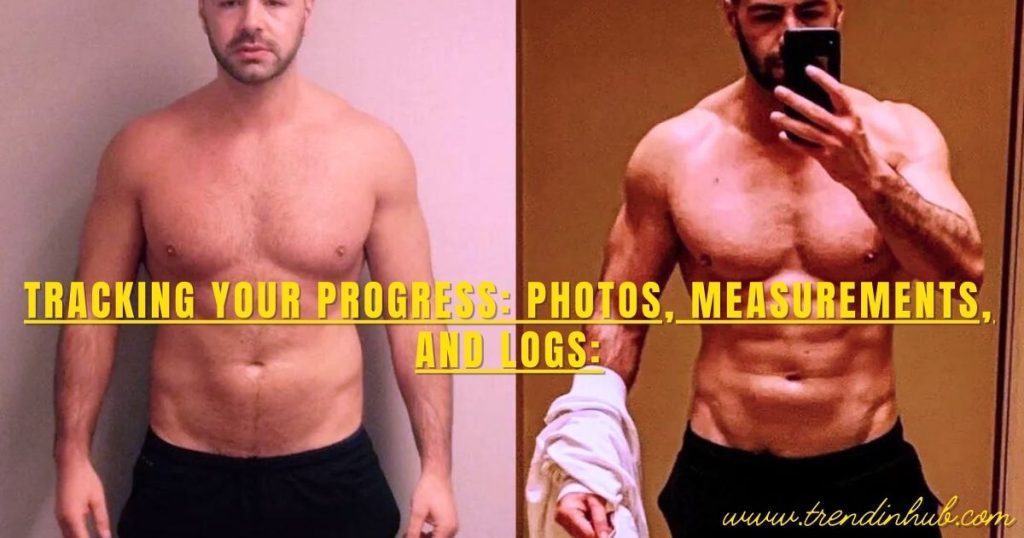1-Introduction:
Welcome to the ultimate guide on “WellHealth How to Build Muscle Tag.” If you’re looking to transform your physique, boost your metabolism, and enhance your overall health, you’ve come to the right place. In this comprehensive blog post, we’ll dive deep into the WellHealth How to Build Muscle Tag program, which emphasizes a balanced approach to fitness. This program doesn’t just focus on lifting weights; it integrates fitness, mental health, and overall wellness to help you achieve your muscle-building goals effectively and sustainably.
The WellHealth How to Build Muscle Tag program is designed to provide you with all the tools and knowledge you need to succeed. From setting clear and realistic muscle-building goals to understanding the crucial role of nutrition, this guide covers it all. We’ll explore how to design an effective training program, incorporate mindfulness practices to reduce stress and improve focus, and the importance of rest and recovery. You’ll also learn how to stay consistent, track your progress, and avoid common pitfalls in muscle building.
- 2-Setting Clear Muscle-Building Goals
- 3-The Role of Nutrition in Muscle Development:
- 4-Designing Your Training Program:
- 5-Incorporating Mindfulness for Muscle Building:
- 6-The Importance of Rest in Muscle Growth "WellHealth How to Build Muscle Tag''
- 7-Staying Consistent with Your Muscle-Building "WellHealth How to Build Muscle Tag'' Routine:
- 8-Tracking Your Progress: Photos, Measurements, and Logs:
- 9-Common Pitfalls to Avoid in Muscle Building"WellHealth How to Build Muscle Tag'':
- 10-The Use of Supplements in Muscle Development:
- 11-"WellHealth How to Build Muscle Tag''Training Safely: Form, Workload Management, and Progression:
- 12-Staying Updated on Muscle-Building Techniques and Trends:
- 13-Success Stories and Inspiration from WellHealth Users:
Join us as we delve into each aspect of the WellHealth How to Build Muscle Tag program, ensuring you have a well-rounded approach to building muscle and improving your overall wellness. By the end of this guide, you’ll be equipped with the knowledge and motivation to embark on your muscle-building journey with confidence. Whether you’re a beginner or looking to refine your existing routine, the ‘’WellHealth How to Build Muscle Tag’’ program has something valuable to offer you.
2-Setting Clear Muscle-Building Goals

Setting clear and realistic goals is a crucial first step in any muscle-building program. Without specific objectives, it’s easy to lose motivation and direction. To start, identify what you want to achieve. Do you want to increase muscle mass, improve your strength, or sculpt your body into a specific shape? Being specific about your goals”WellHealth How to Build Muscle Tag” helps create a clear target to aim for.
For example, instead of setting a vague goal like “I want to get stronger,” make it specific and measurable. A more precise goal would be, “I want to increase my bench press by 10 pounds within three months.” This type of goal is clear and gives you something concrete to work towards. It’s also important to make sure your goals are realistic. Setting unattainable targets can lead to frustration and demotivation. Break down your larger goals into smaller, manageable milestones that you can achieve along the way. This helps keep you motivated and allows you to celebrate small victories as you progress.
Tracking your progress is also essential. Use a journal or an app to record your workouts, noting the weights lifted, repetitions completed, and how you felt during the exercise. Regularly review your progress to see how far you’ve come and to adjust your goals as needed. This continuous tracking helps you stay focused and motivated.
Additionally, share your goals with a friend, workout partner, or a trainer. Having someone to support and encourage you can make a significant difference in your commitment and consistency. They can also provide valuable feedback and help you stay accountable.
3-The Role of Nutrition in Muscle Development:

Nutrition plays a pivotal role in muscle development. Without the right balance of nutrients, your body won’t have the necessary fuel to build and repair muscle tissues ”How to Build Muscle Tag. Protein is perhaps the most critical nutrient for muscle growth. It provides the building blocks (amino acids) that your muscles need to repair and grow after workouts. Aim to include high-quality protein sources in your diet, such as lean meats, fish, eggs, dairy products, legumes, and plant-based proteins like tofu and tempeh.
Carbohydrates are equally important as they provide the energy needed for your workouts. Complex carbohydrates, such as whole grains, fruits, and vegetables, should be the primary source of energy in your diet. They break down slowly, providing a steady supply of energy, and help replenish glycogen stores in your muscles after exercise.
Healthy fats are also essential. They aid in hormone production, including testosterone, which is vital for muscle growth. Sources of healthy fats include avocados, nuts, seeds, and olive oil. These fats also help in the absorption of vitamins and support overall health.
In addition to macronutrients (proteins, carbs, and fats), micronutrients such as vitamins and minerals are crucial for muscle function and recovery. For example, vitamin D, calcium, and magnesium play essential roles in muscle contraction and relaxation.
Hydration is another key aspect of nutrition. Water is involved in every metabolic process in the body, including muscle growth. Staying hydrated helps maintain muscle function, improves workout performance, and aids recovery. Aim to drink plenty of water throughout the day, and consider additional fluids if you are engaging in intense exercise or live in a hot climate.
Proper nutrition also involves timing. Eating a balanced meal or snack that includes protein and carbs before and after your workout can enhance performance and recovery. Pre-workout meals provide the energy needed for exercise, while post-workout nutrition helps repair and build muscle.
4-Designing Your Training Program:
Creating an effective training program is essential for muscle growth to achieve the ””WellHealth How to Build Muscle Tag”. A balanced routine that includes both resistance training and cardiovascular exercise can help you achieve your muscle-building goals while maintaining overall fitness.

Resistance training, or weight lifting, is the cornerstone of muscle building. It involves exercises that work against resistance to cause muscle contraction, leading to strength and mass gains. Compound exercises, which work multiple muscle groups at once, should be a key component of your routine. Examples include squats, deadlifts, bench presses, and rows. These exercises stimulate the release of growth hormones and promote overall muscle development.
In addition to compound movements, include isolation exercises that target specific muscles. This helps address any muscle imbalances and ensures that all muscle groups are developed evenly. Examples of isolation exercises include bicep curls, tricep extensions, and calf raises.
Progressive overload is a fundamental principle in resistance training. It means gradually increasing the weight, frequency, or number of repetitions in your workouts to continually challenge your muscles. This progressive increase is necessary for continuous muscle growth and strength gains.
5-Incorporating Mindfulness for Muscle Building:
Mindfulness practices can significantly enhance your muscle-building efforts by promoting mental well-being and improving workout performance. Mindfulness involves being fully present in the moment, which can reduce stress, enhance focus, and improve the quality of your workouts.
Stress management is crucial for muscle growth. High levels of stress hormones like cortisol can interfere with muscle repair and growth. Mindfulness techniques, such as meditation, deep breathing, and yoga, help reduce stress levels. Regular practice of these techniques can lower cortisol levels, improve mood, and create a more favorable environment for muscle growth.
Mindfulness can also improve your focus during workouts. Being present and fully engaged in your exercise routine helps you perform movements with proper form and technique, reducing the risk of injury. It also allows you to connect more deeply with your body, understanding its signals and needs better. This heightened awareness can lead to more effective workouts and better results.
Incorporating mindfulness into your daily routine can be simple. Start with a few minutes of deep breathing exercises each day. Focus on your breath, letting go of any distracting thoughts. Over time, you can increase the duration and incorporate other mindfulness practices, such as guided meditation or yoga.
Practicing mindfulness outside of your workouts can also benefit your muscle-building journey. It can improve your overall mental health, making you more resilient to stress and better able to stick to your training and nutrition plan. Mindfulness can enhance your sleep quality, which is crucial for muscle recovery and growth.
By integrating mindfulness into your routine, you create a balanced approach that supports both your physical and mental health. This holistic strategy not only enhances your muscle-building efforts but also improves your overall well-being, making your fitness journey more enjoyable and sustainable.
6-The Importance of Rest in Muscle Growth “WellHealth How to Build Muscle Tag”
Rest is an essential component of any muscle-building program. While workouts provide the stimulus for muscle growth, actual muscle repair and growth occur during rest periods. Without adequate rest, your muscles cannot recover and grow effectively.
Sleep is a critical aspect of rest. Aim for 7-9 hours of quality sleep each night. During sleep, your body releases growth hormones that aid in muscle repair and growth. Lack of sleep can reduce the production of these hormones, slowing down your muscle-building progress. Additionally, good sleep enhances overall recovery, reduces the risk of injury, and improves your performance in subsequent workouts.
Rest days are equally important. These are the days you don’t engage in intense workouts, allowing your muscles to recover. Overtraining, or not giving your body enough time to recover, can lead to injuries, fatigue, and decreased performance. It can also increase the risk of burnout, making it harder to stick to your training routine in the long term.
Listening to your body is crucial when it comes to rest. If you feel unusually tired, sore, or unmotivated, it might be a sign that your body needs more rest. Incorporate rest days into your weekly routine, and adjust the intensity and frequency of your workouts based on how your body feels.
Active recovery can also be beneficial. This involves light activities like walking, stretching, or yoga on your rest days. Active recovery promotes blood flow to the muscles, helping to remove waste products and deliver nutrients necessary for repair and growth.
In addition to scheduled rest, make sure you’re giving yourself adequate rest between sets during workouts.
7-Staying Consistent with Your Muscle-Building “WellHealth How to Build Muscle Tag” Routine:
Consistency is the backbone of any successful muscle-building program. Building muscle takes time and persistent effort. Even when motivation wanes, sticking to your routine is crucial for making steady progress. Consistency helps your body adapt to the stresses of training, leading to gradual strength and muscle gains over time to get your main goal ”WellHealth How to Build Muscle Tag”.
To maintain consistency, it’s important to establish a workout schedule that fits your lifestyle. This means choosing times for your workouts that you can realistically stick to, whether it’s early in the morning, during lunch breaks, or in the evenings. By making exercise a non-negotiable part of your routine, similar to brushing your teeth or eating meals, it becomes a habit rather than a chore.
Setting small, achievable goals can help keep you motivated and consistent. Break down your larger muscle-building goals into smaller milestones. For example, aim to increase your squat weight by 5 pounds every two weeks or to complete an extra set of push-ups each week. These incremental goals provide frequent opportunities for success and keep you motivated to continue.
Tracking your progress is another key element. Use a workout log or an app to record your exercises, weights, sets, and repetitions. Seeing your progress over time can be incredibly motivating and reinforces the benefits of staying consistent. Additionally, it helps you identify any plateaus or areas that need adjustment in your training program.
Building a support system can also enhance consistency. Find a workout buddy or join a fitness group to keep each other accountable. Having someone to share your journey with can make workouts more enjoyable and provide a sense of camaraderie. Sharing your goals with friends or family can also create a support network that encourages you to stay on track.
Rest and recovery are part of consistency. Ensure you incorporate rest days and listen to your body to avoid overtraining. Consistent rest helps prevent burnout and keeps you motivated to maintain your training schedule over the long term.
8-Tracking Your Progress: Photos, Measurements, and Logs:
Tracking your progress is an essential aspect of any muscle-building program. It provides tangible evidence of your improvements and can be incredibly motivating. There are several effective methods to track your progress, including taking photos, measuring body parts, and keeping detailed workout logs.

Photos are a great visual tool to document your journey. Take photos from different angles (front, side, and back) under consistent lighting and at regular intervals, such as every two to four weeks. Over time, these photos will show noticeable changes in muscle definition and size that might not be as apparent in the mirror on a day-to-day basis.
Measurements offer another objective way to track muscle growth. Use a flexible tape measure to track the size of key muscle groups such as your biceps, chest, waist, hips, and thighs. Record these measurements periodically to see how your body is changing. This method helps quantify your gains and can be particularly encouraging during times when the scale doesn’t show significant changes.
Keeping a workout log is crucial for tracking your performance in the gym. Record details of each workout, including the exercises performed, weights used, sets, and repetitions. This log helps you monitor your progress and ensures you’re continually challenging your muscles through progressive overload. Reviewing your log can help identify patterns, successes, and areas needing improvement.
In addition to physical measurements, consider tracking other relevant factors such as your diet, sleep patterns, and overall well-being. These elements play a significant role in muscle development and can provide insights into how different factors affect your progress. For example, noting how your workouts feel on days after a good night’s sleep compared to a poor one can highlight the importance of rest.
Consistency in tracking is key. Regularly updating your photos, measurements, and logs helps you stay focused and committed to your goals. It also provides a comprehensive view of your journey, allowing you to celebrate small victories and stay motivated through challenges.
9-Common Pitfalls to Avoid in Muscle Building”WellHealth How to Build Muscle Tag”:
Avoiding common pitfalls is crucial for a successful muscle-building journey. One of the most common mistakes is neglecting proper warm-ups. Skipping a warm-up can increase the risk of injury and reduce the effectiveness of your workouts. A good warm-up prepares your muscles and joints for the upcoming activity, enhances performance, and helps prevent injuries.
Another pitfall is using poor form during exercises. Proper technique is essential to target the correct muscles and avoid injuries. Performing exercises with incorrect form can lead to strains, sprains, and long-term damage. It’s important to learn and practice proper techniques for each exercise. If you’re unsure, consider working with a trainer to ensure you’re doing the exercises correctly.
Overtraining is a significant issue many people face. Pushing your body too hard without adequate rest can lead to burnout, injuries, and decreased performance. It’s essential to listen to your body and include rest days in your routine. Recovery is when your muscles repair and grow, making rest just as important as the workouts themselves.
Neglecting flexibility and mobility work is another common mistake. Incorporating stretching and mobility exercises into your routine helps improve your range of motion, prevents injuries, and enhances overall performance. Activities like yoga or dedicated stretching sessions can complement your strength training.
Improper nutrition is a major pitfall. Without adequate fuel, your body cannot effectively build muscle. Ensure your diet includes sufficient protein, carbohydrates, and healthy fats to support muscle repair and growth. Hydration is equally important. Drink plenty of water to maintain optimal muscle function and recovery.
Setting unrealistic goals can lead to frustration and demotivation. It’s essential to set achievable, measurable goals and understand that building muscle is a gradual process. Celebrate small victories along the way to stay motivated and focused on your long-term objectives.
Ignoring the importance of rest and sleep can hinder your progress. Quality sleep is vital for muscle recovery and overall health. Aim for 7-9 hours of sleep per night to support your muscle-building efforts and improve overall well-being.
Finally, relying too heavily on supplements without focusing on whole foods can be counterproductive. Supplements should complement a balanced diet, not replace it. Prioritize nutrient-dense foods and use supplements to fill in any gaps in your nutrition.
10-The Use of Supplements in Muscle Development:
Supplements can play a supportive role in muscle development, but they should not replace a well-balanced diet. Supplements can help fill nutritional gaps, enhance performance, and aid recovery, but it’s essential to understand their role and use them wisely.
Protein supplements, such as whey or plant-based protein powders, are among the most popular. They provide a convenient way to ensure you’re getting enough protein, especially if you have a busy lifestyle or increased protein needs. Consuming protein supplements after workouts can help with muscle repair and growth, as they provide the necessary amino acids for muscle recovery.
Creatine is another widely used supplement that has been shown to enhance strength and muscle mass. It works by increasing the availability of ATP (adenosine triphosphate), the energy currency of cells, which can improve performance during high-intensity exercises like weightlifting. Taking creatine consistently can help you lift heavier weights and increase muscle mass over time.
Branched-Chain Amino Acids (BCAAs) are also popular for muscle building. They include leucine, isoleucine, and valine, which are essential amino acids that play a role in muscle protein synthesis. BCAAs can help reduce muscle soreness, enhance recovery, and prevent muscle breakdown during intense training.
Pre-workout supplements often contain a mix of ingredients like caffeine, beta-alanine, and nitric oxide boosters to enhance performance, increase energy levels, and improve focus during workouts. While these can be beneficial, it’s important to be mindful of their ingredients and potential side effects, such as jitters or sleep disturbances from high caffeine content.
Omega-3 fatty acids, typically found in fish oil supplements, can support muscle growth by reducing inflammation and improving overall recovery. They also offer numerous health benefits, including improved heart health and joint function.
It’s crucial to consult with a healthcare professional before starting any new supplement, especially if you have any underlying health conditions or are taking other medications. Supplements can interact with medications and may not be suitable for everyone.
While supplements can aid muscle development, they should not replace whole foods. A balanced diet rich in lean proteins, whole grains, fruits, vegetables, and healthy fats provides the essential nutrients your body needs for muscle growth and overall health. Supplements are there to enhance your nutrition, not replace it.
11-“WellHealth How to Build Muscle Tag”Training Safely: Form, Workload Management, and Progression:
Training safely is paramount to a successful and sustainable muscle-building program. Ensuring proper form, managing workload, and progressing gradually are key components to avoid injuries and achieve optimal results.
Proper form is crucial in preventing injuries and maximizing the effectiveness of your exercises. Each exercise has a specific technique that targets the intended muscles while minimizing strain on joints and other body parts. It’s important to learn and practice the correct form for each exercise. If you’re new to weightlifting or unsure about your technique, consider working with a certified trainer who can guide you and provide feedback. Using mirrors or recording your workouts can also help you monitor and correct your form.
Workload management involves balancing the intensity and volume of your workouts to avoid overtraining. Overloading your muscles is necessary for growth, but too much can lead to injuries, fatigue, and burnout. Start with weights that challenge you but are manageable, and gradually increase the intensity as you become stronger. Incorporate rest days into your routine to allow your muscles to recover and repair.
Gradual progression is a key principle in strength training. It involves steadily increasing the weights, repetitions, or sets over time to continually challenge your muscles. This approach helps prevent plateaus and promotes continuous muscle growth. However, it’s important to progress at a pace that your body can handle. Rapid increases in intensity or volume can lead to injuries. Listen to your body and adjust your training load accordingly.
Warm-ups and cool-downs are essential components of a safe workout routine. Begin each session with a thorough warm-up to increase blood flow to your muscles, improve flexibility, and prepare your body for the upcoming workout. Dynamic stretches and light cardio activities are effective warm-up
12-Staying Updated on Muscle-Building Techniques and Trends:
Staying updated on muscle-building techniques and trends is essential to keep your workout routine effective and engaging. The fitness industry continuously evolves, with new research, technologies, and methodologies emerging regularly. Keeping up with these changes can help you refine your training program, avoid plateaus, and stay motivated.
One of the best ways to stay informed is by following reputable fitness experts and organizations. Many fitness professionals, trainers, and nutritionists share valuable insights and updates through blogs, social media, podcasts, and YouTube channels. These resources can provide tips on new exercises, training techniques, and nutritional advice tailored for muscle building.
Scientific journals and fitness magazines are also excellent sources of information. They publish research studies and articles on the latest findings in sports science, exercise physiology, and nutrition. Subscribing to these publications can help you understand the science behind muscle building and apply evidence-based strategies to your routine.
Attending fitness workshops, seminars, and conferences can be incredibly beneficial. These events offer opportunities to learn from experts, try new training methods, and network with like-minded individuals. Participating in such events can provide hands-on experience and practical knowledge that you can incorporate into your workouts.
Online fitness communities and forums are great for staying updated and connecting with others who share your goals. Platforms like Reddit, Bodybuilding.com, and various fitness Facebook groups allow you to discuss trends, ask questions, and share experiences. Engaging with these communities can provide support, inspiration, and new ideas for your training program.
Fitness apps and wearable technology are becoming increasingly popular. These tools can track your workouts, monitor progress, and provide personalized recommendations based on your performance data. Many apps also offer updates on the latest fitness trends and exercises, helping you keep your routine fresh and effective.
Additionally, consider working with a personal trainer or fitness coach. Professionals stay current with the latest trends and research to provide the best possible guidance to their clients. Regular sessions with a trainer can ensure that your technique is correct, your workouts are effective, and you’re incorporating the latest muscle-building strategies.
Finally, remember to be critical of the information you come across. Not all trends are backed by solid research, and some may not be suitable for everyone. Evaluate new techniques and trends based on their scientific credibility, practicality, and how they align with your personal goals and fitness level.
13-Success Stories and Inspiration from WellHealth Users:
Success stories and inspiration from WellHealth users can provide powerful motivation and practical insights for your muscle-building journey. Hearing about others’ experiences and achievements can encourage you to stay committed to your goals and remind you that progress is possible with dedication and consistency.Many WellHealth users have transformed their bodies and lives through disciplined training, proper nutrition, and the holistic approach promoted by WellHealth. These individuals often share their journeys, detailing the challenges they faced, the strategies they used, and the results they achieved. Their stories can serve as a valuable resource for learning and inspiration.For instance, some users have achieved significant muscle growth by adhering to a structured workout regimen and making thoughtful dietary choices. They often emphasize the importance of setting clear goals, staying consistent with workouts, and ensuring adequate recovery time. Reading about their routines can provide you with practical tips and ideas for your own training program.Other users may highlight the mental and emotional benefits they’ve gained from their fitness journey. Building muscle isn’t just about physical changes; it also involves mental resilience, confidence, and improved overall well-being. These stories can motivate you to keep going, even when progress seems slow or when facing setbacks.Transformation photos and videos are also compelling. Seeing before-and-after images of individuals who have successfully built muscle with WellHealth can provide a visual representation of what’s possible. These visuals often come with detailed explanations of the steps taken to achieve such results, offering you a blueprint to follow.WellHealth’s community platforms, such as forums or social media groups, are excellent places to find and share success stories. Engaging with these communities allows you to connect with others who are on similar journeys. You can exchange tips, celebrate each other’s achievements, and provide support during challenging times. This sense of community can significantly enhance your motivation and commitment.Moreover, WellHealth often features user testimonials and case studies. These detailed accounts typically include specific strategies, workout plans, dietary adjustments, and personal reflections. Learning from these testimonials can help you understand what works in real-world scenarios and how to tailor those strategies to fit your unique circumstances.In addition to reading success stories, consider sharing your own progress and achievements. Documenting your journey not only keeps you accountable but also inspires others who might be struggling. Your story could be the motivation someone else needs to stay on track or to start their own muscle-building journey with WellHealth.In summary, drawing inspiration from the success stories of WellHealth users can provide valuable insights and motivation. Their experiences highlight the importance of consistency, goal-setting, proper nutrition, and mental resilience, offering practical advice and encouragement for your muscle-building journey. Engaging with the WellHealth community can further enhance your experience, providing support, accountability, and a sense of belonging.
“WellHealth How to Build Muscle Tag” Conclusion:
Building muscle through the “WellHealth How to Build Muscle Tag” program involves a holistic approach that encompasses clear goal-setting, proper nutrition, structured training, mindfulness, and consistent effort. Staying updated on the latest muscle-building techniques and trends ensures that your routine remains effective and engaging, while success stories from other WellHealth users provide inspiration and practical insights. By focusing on these elements, you can achieve significant muscle growth, improved overall health, and enhanced well-being.
Ultimately, the journey to building muscle is not just about physical transformation but also about fostering mental resilience and overall wellness. Embracing the comprehensive “WellHealth How to Build Muscle Tag” approach, which integrates scientific principles, community support, and personalized strategies, can lead to sustainable and fulfilling progress. Stay committed, stay informed, and let the successes of others inspire you to reach your muscle-building goals with WellHealth.
People Also Asked:
What to Drink to Gain Muscle?
To gain muscle, drink protein shakes (especially whey or casein protein), plenty of water, milk, and nutrient-rich smoothies. These drinks help with muscle recovery and growth.
Is Milk Good for Muscle Growth?
Yes, milk is excellent for muscle growth. It provides high-quality protein (whey and casein), carbohydrates, fats, and essential vitamins and minerals like calcium and vitamin D, supporting muscle repair and overall health.
What Foods Increase Muscle Mass?
Foods that increase muscle mass include:
- Lean meats: Chicken, turkey, and lean beef.
- Fish: Salmon and tuna.
- Eggs
- Dairy: Greek yogurt and cottage cheese.
- Legumes: Beans and lentils.
- Nuts and seeds: Almonds and chia seeds.
- Whole grains: Brown rice and quinoa.
- Fruits and vegetables: Berries and spinach.
How to Gain Muscle Fast?
To gain muscle fast:
- Resistance Training: Focus on compound exercises like squats and deadlifts.
- Protein Intake: Consume 1.6 to 2.2 grams of protein per kilogram of body weight.
- Caloric Surplus: Eat more calories than you burn.
- Recovery: Get enough sleep and rest days.
- Supplements: Consider protein shakes and creatine.
How Can I Bulk in 7 Days?
Bulking significantly in seven days is challenging, but you can try:
- Increasing Caloric Intake: Eat more calories, focusing on protein, healthy fats, and complex carbs.
- Intense Training: Perform high-intensity resistance training.
- Hydration and Nutrition: Stay hydrated and eat nutrient-dense foods.
- Supplements: Use protein supplements and creatine.
- Recovery: Ensure adequate sleep and rest.
Is Rice Good for Muscle Building?
Yes, rice, especially brown rice, is good for muscle building. It provides complex carbohydrates for energy and is best paired with protein sources like chicken or beans for a balanced meal supporting muscle growth.










